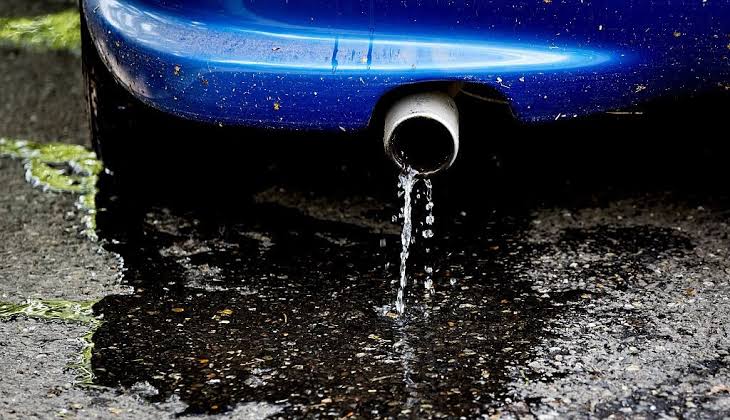White smoke emanating from your vehicle can be quite a disconcerting sight. It’s often a signifiers of something amiss within your engine. However, when you notice white smoke and your engine is not overheating, it raises a perplexing question: what does it mean? This phenomenon has intrigued many car owners and mechanics alike, as it suggests an underlying issue that doesn’t follow the typical overheating narrative. Let’s delve into this white smoke mystery and explore the potential causes, implications, and solutions.
Firstly, understanding the basics of automotive smoke can be enlightening. Smoke from your exhaust can be categorized broadly into three colors: white, blue, and black. Each color indicates different issues. White smoke, in particular, often leaves car owners puzzled, especially when it doesn’t accompany the typical symptom of overheating. While encountering white smoke, one may wonder why it is happening and what it indicates about the engine’s health.
In most cases, white smoke is an indicator of coolant entering the combustion chamber. This ingress can result from a few specific malfunctions within your vehicle’s engine. The most common culprits include a blown head gasket, a cracked engine block, or a damaged cylinder head. Each of these components plays a crucial role in maintaining the integrity and efficiency of your engine. The head gasket, in particular, is vital—serving as a seal between the engine block and the cylinder head, it ensures that the coolant and engine oil remain separate.
When the head gasket fails, it can cause coolant to seep into the combustion chamber. This situation results in white smoke as the coolant vaporizes during the combustion process. Interestingly, this issue may not lead to immediate overheating, especially if the cooling system remains somewhat functional. However, ignoring the symptoms can lead to catastrophic engine failure, which would require extensive repairs or even a complete engine replacement.
On the other hand, a cracked engine block or cylinder head can create similar complications by allowing coolant to mix with fuel. This combination may result in identifiable white smoke but without the alarming temperatures of overheating. Here, too, the underlying damage can escalate if not addressed promptly. Regular maintenance checks are essential to avoid such issues. While checking for leaks or internal damage requires a specialized technician, being vigilant about any changes in performance or unusual emissions can save significant trouble down the line.
It’s also worth mentioning another scenario where white smoke might appear during routine vehicle operation. Cold weather can lead to temporary white smoke as condensation in the exhaust system evaporates. In this context, the white smoke dissipates quickly and does not indicate a serious mechanical problem. However, distinguishing between harmless condensation and symptomatic smoke is critical. If the white smoke persists as your vehicle warms up, it may indicate something more serious.
Car enthusiasts and mechanics often share intriguing observations about the behavior of engines and their indications. The fascination with white smoke lies not only in its implications for engine health but also in its potential to provoke exploration into the intricacies of automotive engineering. Understanding the nature of combustion and engine cooling encourages deeper appreciation for how cars function. A blend of chemistry and mechanics plays a crucial role in the seamless operation of a vehicle, and any disturbance can signal a need for attention.
When confronting the mystery of white smoke, it’s imperative to consider actionable steps. Begin by inspecting your coolant levels. If you notice a significant drop, a leak may be present, indicating further investigation is warranted. Additionally, keeping tabs on your oil levels can provide further clues. If the oil looks milky or has changed consistency, it suggests coolant mixing with the oil, a sure sign of a head gasket issue. Don’t hesitate to consult with a trusted mechanic for a thorough diagnostic. Early intervention can save a considerable amount of money and prevent further complications.
In the unfortunate event that you determine you are dealing with a blown head gasket or similar issue, the repair process can be intricate. Mechanics typically recommend a complete engine evaluation to assess the scale of the damage and determine whether a repair or replacement is necessary. Some may be inclined to tackle these repairs independently, but be cautious—modern engines can be complex, and a misunderstood issue may lead to further complications. Consulting with a professional can provide peace of mind and ensure that you receive proper care for your vehicle.
In closing, while the sight of white smoke can be alarming initially, understanding its implications is paramount. Addressing the white smoke mystery requires knowledge, vigilance, and timely action. Recognizing when white smoke is a benign occurrence versus a harbinger of deeper issues can protect your investment and keep your vehicle operating efficiently. Maintaining open lines of communication with your mechanic and staying attuned to your car’s performance will always be beneficial. In this way, you ensure that your journey on the road continues smoothly, with fewer interruptions inherent in the unexpected complexities of automotive life.
